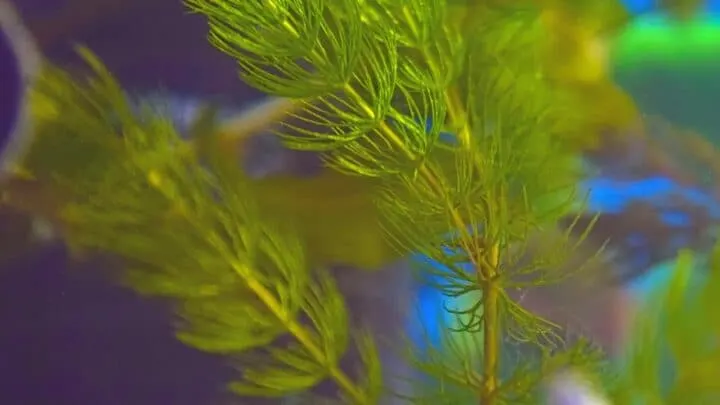Planted aquariums, which are fish tanks containing living plants, are a great way to combine beautiful home décor with plant cultivation and animal care.
Learning the art of aquascaping allows you to create eye-catching, balanced ecosystems in your living room.
Using LED lights to grow plants in your aquarium also allows you to add striking light features to your aquatic display.
Unlike normal fish tanks, in which plants are usually only an accessory, planted tanks are designed around their plant life, and feature fish as an added bonus.
While plants with all manner of growth types can look fantastic in water, there is something especially magical about bushy aquatic plants, whose thick, tufty growth makes your aquarium look like an ancient underwater forest.
Table of Contents
Which are the best bushy aquarium plants to grow?
- Blyxa Japonica
- Ludwigia Repens
- Anubias Nana
- Fanwort
- Amazon Sword Plant
- Bacopa Australis
- Anacharis
- Ambulia
- Java Moss
- Hornwort
- Brazilian Pennywort
Aquarium plants grow in three ways. Rooted plants grow with their roots in a substrate at the bottom of your tank. They grow out from runners rather than from seeds.
Bunch plants are planted close together and grow from stem cuttings.
Floating plants’ roots get everything they need from the water they are in. Floating plants can be anchored down with pebbles or can grow free-floating in water.
Combining plants from all three categories creates particularly beautiful underwater landscapes.
Caring for and encouraging bushy growth looks different based on which of these three categories an aquatic plant falls into.
The 5 best bushy rooted plants for aquariums
Blyxa Japonica

Blyza Japonica is a stem and leaf plant native to South Asia. It has a strong root system and produces small white blooms. It resembles thick bunches of grass growing close the ground.
Each plant has a central stem that develops internodes, which gives them their bushy appearance.
Blyxa Japonica is a moderately difficult plant to care for. It likes slightly acidic water, bright light, and a nutrient-rich substrate.
For a quick review of what bright light is, check out this essential guide to houseplant light levels.
Ludwigia Repens

Ludwigia Repens is native to North and Central America. It is beloved for its bright red color and its thick, bushy stems.
With the right care, it can grow up to 20 inches tall. It is a fast-growing plant and prefers water that is slightly acidic.
It is not a demanding plant at all. As an aquatic stem plant, it must be rooted in a substrate, and it takes in water through its roots.
It requires high light levels and should be grown in water that is between 75- and 79-degrees Fahrenheit. It likes to be fertilized regularly with iron-rich plant food.
You can prune it regularly to achieve fuller, bushier growth.
Anubias Nana
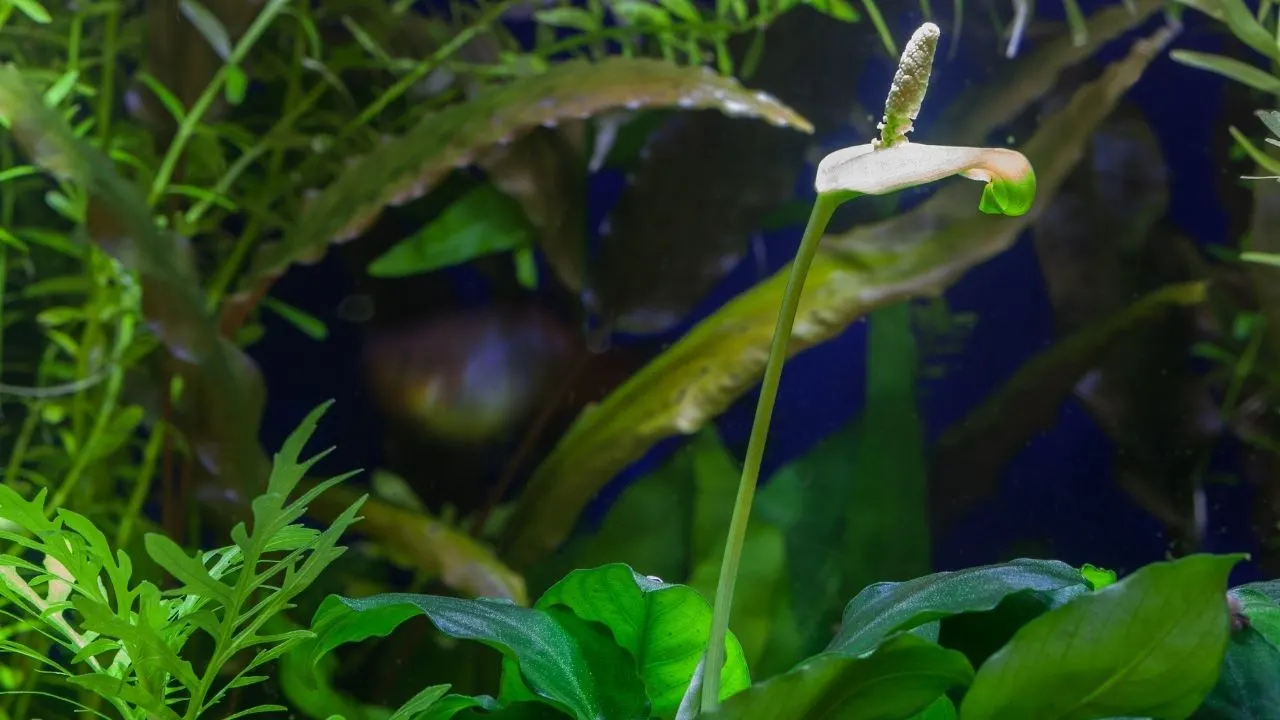
Anubias Nana is a slow-growing, dark green rooted aquatic plant from the Aracae family.
It is bushy in appearance and can be made to look even bushier through regular pruning. It is a short plant and reaches only 7.5 inches in height.
Native to Africa, it helps keep the nitrate levels in water in check and cleans and oxygenates aquariums.
The white roots of Anubias Nanas need to be rooted in a substrate. These aquatic plants prefer slightly acidic water that is between 72- and 82-degrees Fahrenheit.
You can trim particularly long stems down to half their length to encourage bushier growth.
Fanwort

Fanwort is sold in bunches and must be gently planted on a substrate at the bottom of your aquarium.
It is happiest with its roots growing in mud. It has slim leafstalks and beautiful thin leaves that give it a wispy, fern-like appearance.
When encouraged to grow close together and kept in the right water and light conditions, it has a unique, bushy look.
It is a difficult-to-care-for plant and likes medium to high lighting conditions and a water pH between 6.8 and 7.5.
For an explanation of pH levels in the water, read this guide to moving pH levels up and down in hydroponics.
Fanwort has fragile roots, which means that any attempt to move it must be done with the utmost care in order to avoid ripping them.
With the right care, your Fanwort will look like a bushy bottle brush.
Amazon Sword Plant
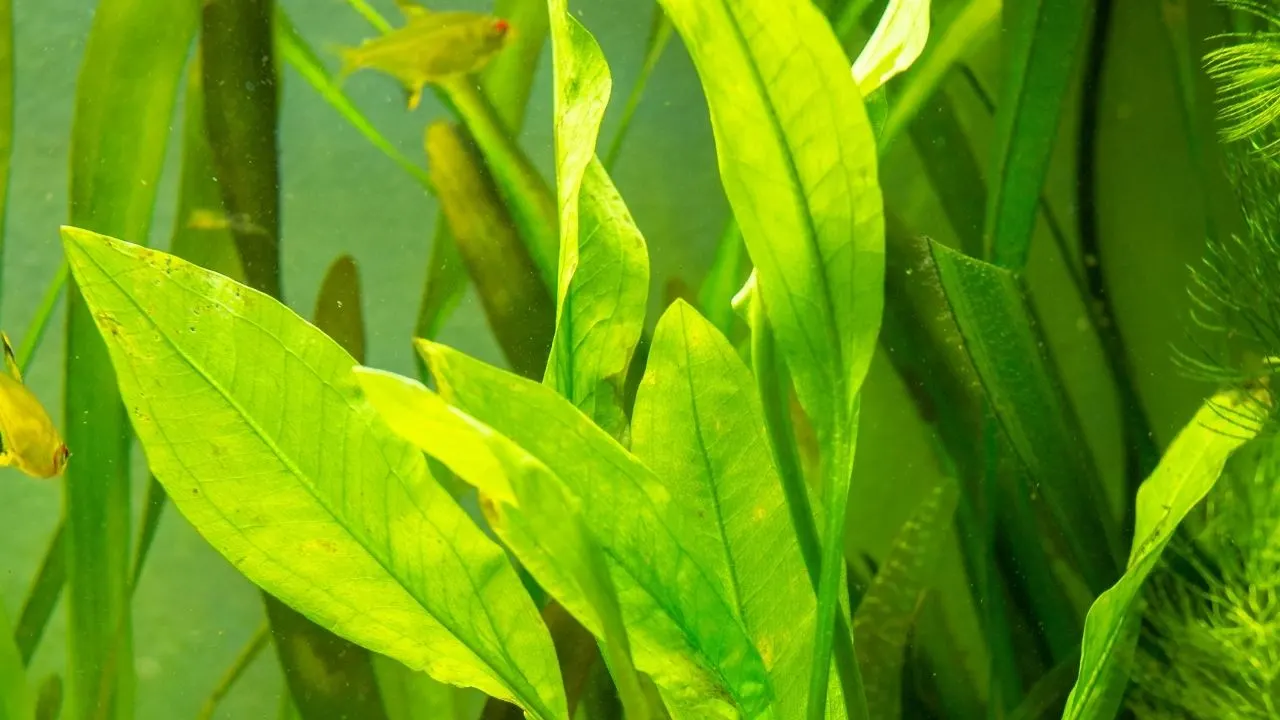
Amazon sword plants have lush, sword-shaped green leaves. Particularly when grown in a cluster, they look like a striking, bushy forest.
They are not especially fussy plants. They require an aquarium pH between 6.5 and 7.5 and water temperatures between 72- and 82-degrees Fahrenheit.
They like to be exposed to moderate to strong light for between 10 and 12 hours per day.
Sword plants grow slowly but can eventually reach heights of between 18 and 20 inches. Make sure your tank has enough room for these plants before deciding to anchor them in your substrate.
You can also grow sword plants in a smaller tank, but if you do so you will have to trim them regularly to keep them an appropriate size.
Sword plants’ new growth emerges from the middle of the plant, so make sure you trim the outer leaves when they begin to fade. Doing so will keep your plants healthy and will also encourage bushier growth.
Sword plants prefer to be grown in loose soil than in gravel but can survive in either.
The 3 best bushy bunch plants for aquariums
Bacopa Australis
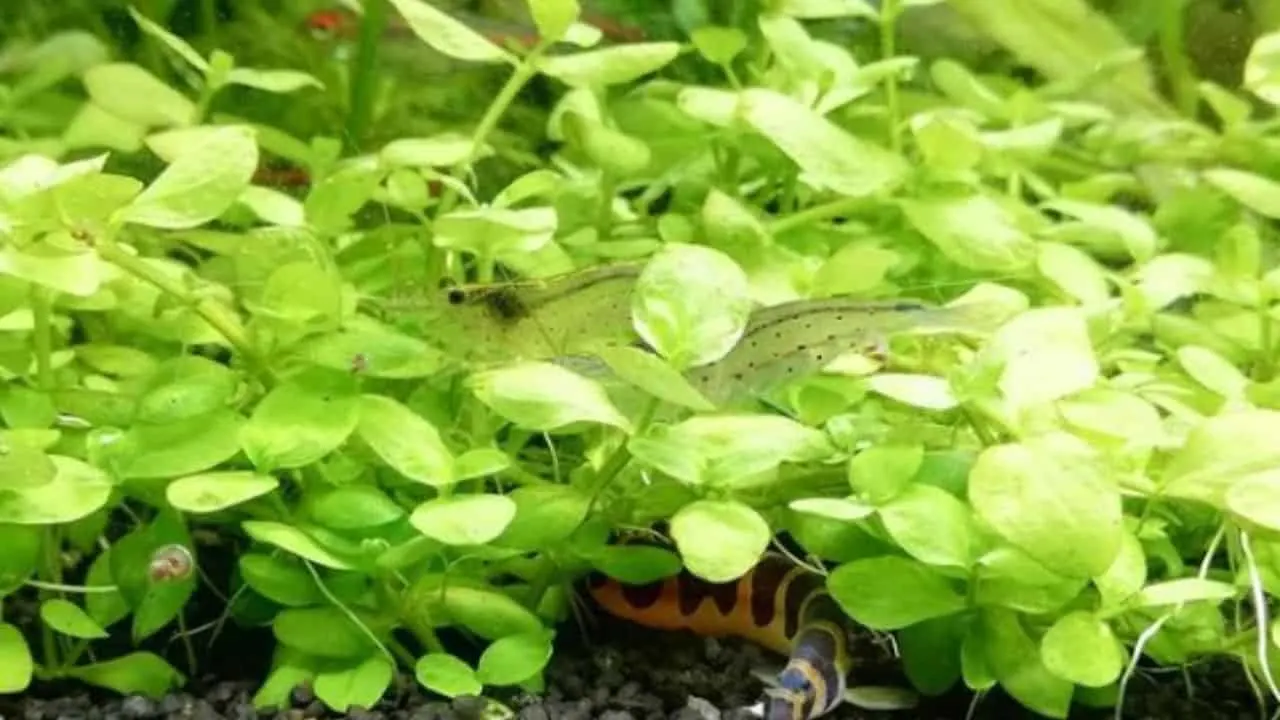
Photo Credit: @aquaspach on Instagram!
This hardy bunch plant should be planted into a nutritionally rich substrate.
With a delicate watercress-like structure, Bacopa Australis grows in small bunches that can be separated and propagated. For this reason, it is one of the easiest houseplants to propagate.
Bacopa Australis’s close growth lends it a beautiful bushy appearance, which can be further enhanced with strategic pruning.
This member of the Plantaginaceae family is native to Central and South America. It can reach heights of between 4 and 12 inches. It prefers water to have a pH level of between 6 and 7.5, and requires moderate to high light levels.
As with most aquatic stem bunch plants, Bacopa Australis will grow very tall if left to its own devices and should therefore be trimmed regularly. This regular trimming will give it a fuller, bushier appearance.
Anacharis

Anacharis is an easy-going, adaptable aquatic plant. It has delicate green stalks and fine, thin leaves. This stem bunch plant prefers temperatures between 72- and 78-degrees Fahrenheit and likes water with pH levels between 6.5 and 7.5.
Medium-light is bright enough to keep an Anacharis happily photosynthesizing, and in fact, if Anacharis are exposed to too much light for too long, algae will begin to grow on their lower stems.
As a bunch plant, Anacharis are usually sold as several stems held together by a rubber band.
Stems can be placed directly into the substrate of your aquarium. Plant them two inches deep and aim to keep them an inch apart.
Cutting Anacharis stems down to half their height when they get too tall will result in their stem splitting into two when it regrows, which will give the plants a thicker, fuller appearance.
Ambulia
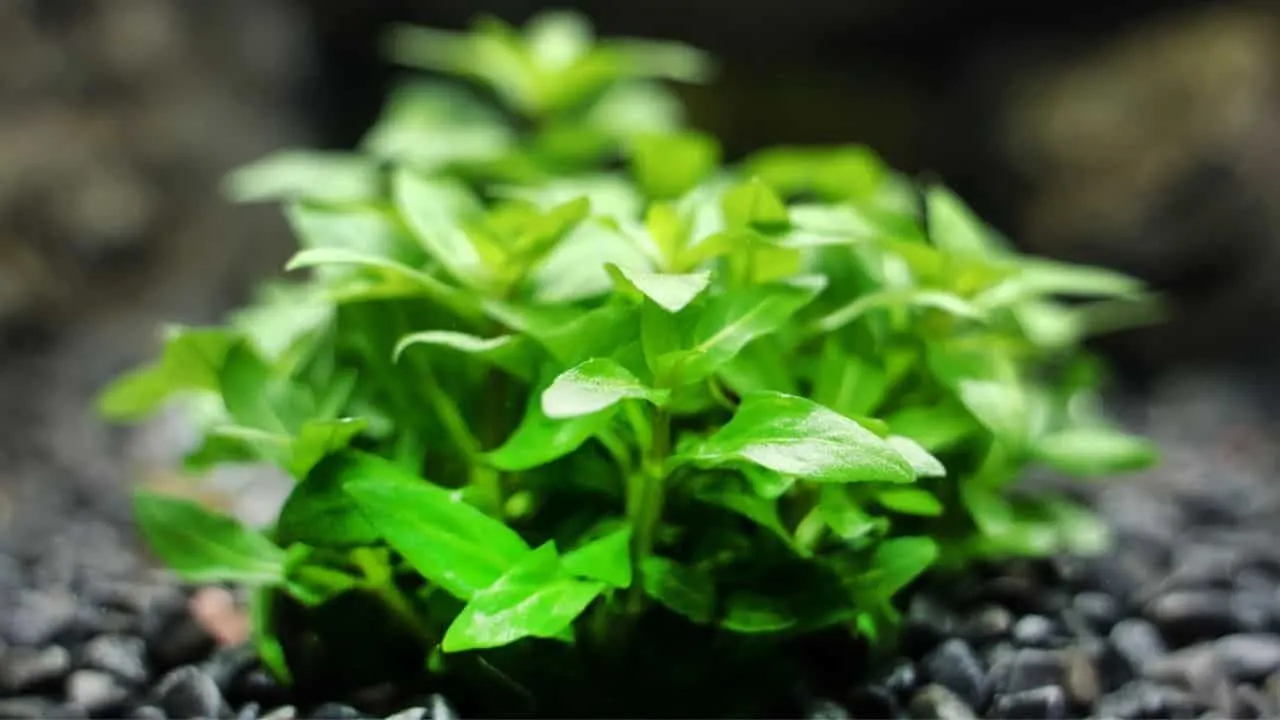
Ambulias have several tiny stems that split out into internodes, all of which grow their own miniature leaves. This unique growth pattern gives these bunch plants the appearance of miniscule, dainty palm trees.
Native to Southeast Asia, Africa, Australia and the Pacific Islands, these plants have unmistakable bushy green growth and unique round foliage.
Ambulias prefer water with pH levels between 5 and 5.5. They are highly adaptable and are frequently referred to as a low-light alternative to Camboba plants, because they have similar leaf patterns but are far less finicky when it comes to light exposure.
The more light Ambulias get, the “leggier” their growth will be. To encourage bushier growth, they should be kept in moderate light.
Pinching your Ambulia plant’s tallest stems down will keep it healthy and also give it a bushier appearance.
The 3 best bushy floating plants for aquariums
Java Moss

Java Moss is an easy-going floating plant. It is native to Southeast Asia and can grow up to 4 inches tall.
It does not need much light and can tolerate low temperatures. In fact, make sure you are not giving your plant too much light, as this may cause Java Moss to turn brown.
As long the temperature of your aquarium water is between 59 and 82 Fahrenheit, your Java Moss will be happy.
It is also very flexible where water pH levels are concerned, and can survive in water that is anywhere between 5.5 and 8.
Its delicate growth forms into branched stems that prolifically grow little leaves. These leaves are the main means through which Java Moss absorbs nutrition.
Java moss can grow floating in water. This allows it to serve as a spawning place for certain varieties of fish.
It likes high-quality water, so changing the water in your fish tank regularly is a good idea and will help your Java Moss grow fast.
The biggest problem to watch out for when it comes to growing Java Moss, is to avoid allowing algae to grow in it. Once this happens, it is difficult to separate the algae from the moss without killing your plant.
Algae is most likely to grow in old water that regularly receives a lot of light. The higher the nitrate and phosphate levels your water, the more likely algae is to take up residence in it.
Make sure that you are not leaving your LED aquarium lights on for too many hours per day.
As Java Moss grows, it spreads outwards and upwards, giving it wild, bushy look. Regularly prune down long stems to half their length to encourage tuftier growth.
Hornwort

Hornwort is an easy-going plant that can survive in a wide variety of water conditions. It grows beautifully as a free-floating plant and is a fast grower. It will happily keep growing as long as it has space to. It likes slightly acidic water with pH levels between 6 and 7.5.
Hornwort grows in a wide variety of temperatures and will be happy in water that is anywhere between 59- and 86-degrees Fahrenheit.
Hornwort’s primary care requirement is that it receives enough light and that the water it is in is clean enough for it to absorb the light it has access to.
For best results, you can use filtered or distilled water to fill your tank, as these are the best kinds of water for houseplants.
Its unique, furry leaves grow out from its many stems in whorls of between six and twelve leaves. Its stems split after about every inch of growth.
Hornwort is a great oxygenizer, and when grown as a floating plant it provides shelter for fish.
When the stems of your Hornwort begin to look out of control, you can simply cut them down. This will help keep your plants from taking over the entire tank, and will also give them a bushier, fuller appearance.
If you are growing Hornwart as a free-floating plant, you will need to ensure it does not spread out too much across the tank’s surface and block the light from reaching your plants underneath.
Brazilian Pennywort
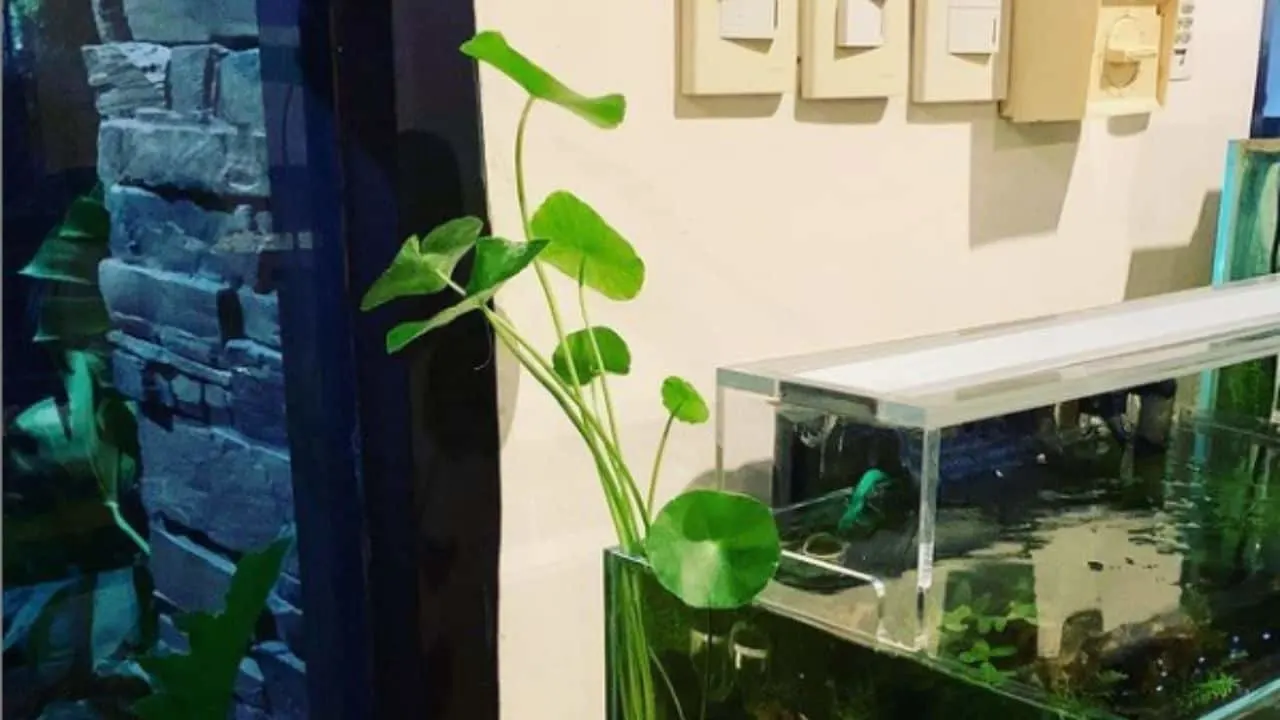
Photo Credit: @plantchaser on Instagram!
With its vine-like, kidney-shaped leaves, Brazilian Pennywort is a unique-looking aquatic plant. It is light green in color and resembles some ivy varieties more closely than many of its water-based compatriots.
It can be grown either as a rooted or as a floating plant.
While it looks beautiful floating on the water, you should make sure it is not casting too much shade and thereby preventing light from reaching plants growing on the bottom of your tank.
Brazilian Pennywort is a fast-growing plant and requires regular pruning in order to be kept at an appropriate size for an aquarium.
For best results, feed your Brazilian Pennywort an iron-heavy fertilizer every so often. If its leaves begin to turn yellow, it is likely because it is nutrient deficient.
The stems of Brazilian Pennywort grow in segments, with the result that they can easily break along their joints if handled too roughly. You should therefore take extra care when touching Brazilian Pennywort’s stems, especially when trimming them.
Brazilian Pennywort prefers water with pH levels between 6 and 7.8, and temperatures between 68 and 82 degrees.
Brazilian Pennywort is an excellent cleaner and keeps nitrate levels down, which makes it more difficult for algae to build up.

Daniel has been a plant enthusiast for over 20 years. He owns hundreds of houseplants and prepares for the chili growing seasons yearly with great anticipation. His favorite plants are plant species in the Araceae family, such as Monstera, Philodendron, and Anthurium. He also loves gardening and is growing hot peppers, tomatoes, and many more vegetables.

